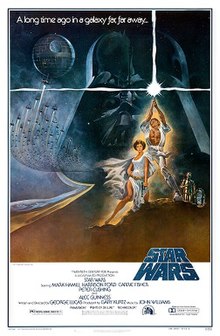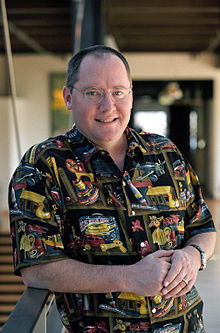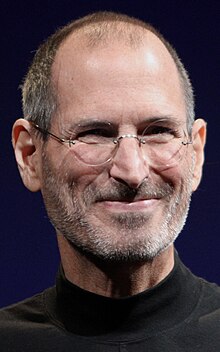On November 22, 1995, the movies went infinity and beyond with the release of Toy Story, the first feature length movie made entirely by computer graphics. Critics were blown away with it's revolutionary computer animation and storytelling, and the film became a smash hit, prompting Hollywood to make more computer generated animated films in the future. But the film is a production nightmare and was almost never made. In this 2 part saga, we examine the case of the history of Pixar and the making of Toy Story.
Where Did It All Start?
Edwin Catmull
Pixar has it's roots back in the early 1970's. After graduating from The University of Utah, computer scientist Edwin Catmull applied to New York's Institute of Technology, which just started it's new computer division called Computer Graphics Lab. After meeting his partner, Alvy Ray Smith, they began to gather a team of early computer graphics pioneers to create some innovative software.
Shortly after Star Wars kicked off a renaissance of special effects extravaganzas, George Lucas was looking forward to expand his filmmaking empire. He contacted Catmull and his team to establish a computer graphics facility at his production company, Lucasfilm. Among the division's first actions were inventing a digital editing system (EditDroid), a digital audio system, and a laser film printer.
In 1982, Lucasfilm's Computer Graphics Division teamed up with it's sister company, Industrial Light and Magic, to create the famous Genesis Effect sequence from Star Trek II: The Wrath of Khan. They spent 5 months advancing texture mapping, motion blur, digital matte painting, and compositing programs to create this sequence. At that point, only one crucial element is missing: someone who is an expert in animation.
John Lasseter
John Lasseter has been fascinated by animated films as a small child and often run home from school to watch cartoons on television. During high school, he read Bob Thomas' book, "The Art of Animation", which explores how animated films are made. After he finished reading, he finally realized that he was born to be an animator. In 1975, he graduated from high school and applied to the California Institute of the Arts (CalArts), an arts program founded by Walt Disney in 1961. He was taught by three members of Disney's Nine Old Men team of veteran animators, and his classmates went on to become celebrities like Brad Bird, John Musker, Tim Burton, and Henry Selleck.
After winning two student awards for his two short films and graduating from CalArts, Lasseter arrived at Disney in 1979. Shortly after his arrival, he became disillusioned with the management of the company, especially when the 1981 feature, The Fox and the Hound, was put into production.
During the making of the 1983 cartoon short, Mickey's Christmas Carol, two close friends of Lasseter's, Bill Kroyer and Jerry Rees, were working on Tron, which was about the video game world. After they showed Lasseter a scene from the film, he was blown away by the computer generated environments to create this world. Tron only made a modest profit, thanks to Steven Spielberg's E.T. hogging box office records in 1982. But that didn't stop Lasseter from campaigning for computer graphics in animated films in the future.
In 1983, Lasseter and fellow animator Glen Keane created an animated short test film that combined traditional hand drawn animation with state of the art computer graphics. Around the same time, they were developing an animated feature adaptation of The Brave Little Toaster, based on the book by Thomas Disch. After Lasseter pitched his ideas for the project, he was let go. The Brave Little Toaster did get made, but that was from a different animation studio. But Lasseter did not give up.
Shortly after his departure from Disney, Lasseter applied to Lucasfilm's Computer Graphics Division and brought his knowledge of animation along with him. Among his first actions at the company were his 1984 short film, The Adventures of Andre and Wally B, and his work on the stained glass knight scene in Young Sherlock Holmes (1985), which earned an Oscar nomination for Best Visual Effects.
Steve Jobs
After Lucasfilm's Computer Graphics Division was experiencing financial difficulties, the company is later taken over by entrepreneur and Apple founder Steve Jobs in 1986. The company was later renamed Pixar, named after the Pixar Image Computer, which was used for medical research.
Between the late 1980's to the early 1990's. Pixar spent much of it's time making experimental short films for computer graphics conventions, making television commercials for various clients, and developing a digital ink and paint software for Disney's animation division for their animated films. Their 1988 short film, Tin Toy, won an Academy Award for Best Animated Short Film in 1989. This attracted Disney, who gave John Lasseter a choice, go back to Disney, or stay at Pixar. He chose the latter. Still, Pixar was willing to work for Disney and singed a contract. Originally, Pixar wanted to develop a Christmas special based on Tin Toy, but Disney went further with developing an idea for a feature length motion picture.
The story continues in part 2.







No comments:
Post a Comment